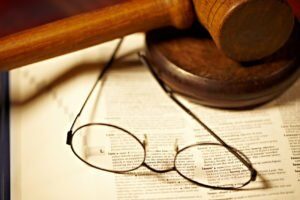Since the action for discovery of evidence is a kind of declaratory action, it would be meaningless to request a judgment of performance in this case. In this case:
The parties may be heard,
Witnesses may be heard,
Discovery is available,
An expert report may be issued,
Letters can be written to the relevant persons and institutions and the evidence in their possession can be obtained,
Other necessary measures may be taken to obtain evidence and preserve the evidence obtained.
Nevertheless, it would be unlawful to make a judgment in such a way as to grant rights to the parties or to put them in debt, as if there is a request for performance as a result of the determination of evidence. In other words, as a result, the court examining the request for the determination of evidence may determine the evidence regarding the existence of the violation of law, determine which party is responsible for the violation of law, ensure that the existing damage is calculated if there is damage, and make decisions that do not contain a performance clause.
In addition, in the event that a decision containing any performance clause is rendered, it cannot be said that this decision rendered in the evidence determination case has the quality of enforceability.
How is it ensured that the evidence in question is identified in the discovery of evidence case?
The judge examining the request for discovery of evidence can ensure that the relevant documents are brought and added to the file by writing a writ to the necessary places mentioned above, listen to witnesses, make a detailed examination and obtain findings on the subject for which discovery is requested through on-site discovery, and have an expert report prepared by an expert in the field.
In most cases, the person against whom discovery is requested and the person requesting discovery do not face each other as they would in a real case. Interrogation is also rarely conducted in a discovery case. In fact, the person against whom discovery is requested cannot even learn the contents of this case file, i.e. the documents in the file, by seeing them in his UYAP citizen system until he learns them through the notification to be made to him in accordance with Article 402/3 of the CCP (as in the requests for protection and prevention measures numbered 6284). If it is desired to obtain information about the content of the file prior to the notification to be made, it is necessary to go to the court penal office that examines the request for discovery of evidence.
In this way, it is not possible to talk about the certainty of the evidence put forward in the discovery of evidence, since the person against whom the discovery is requested is not confronted as much as in the conditions of a normal lawsuit and contradiction is not ensured in this way. Pursuant to Article 405 of the CCP, the evidentiary file shall be considered as an annex to the main case file and shall be consolidated with it. Each of the parties to the main lawsuit may rely on these minutes and reports to prove the statements in their claims or defenses, in other words, the party against whom the determination is requested may also rely on the findings in his/her favor as a result of the determination of evidence. In addition, it is possible to object to an expert report obtained as a result of the discovery of evidence case in the main lawsuit to be filed later. Therefore, the discovery of evidence lawsuit is more of a kind of guidance for the person requesting discovery and his/her attorney.

